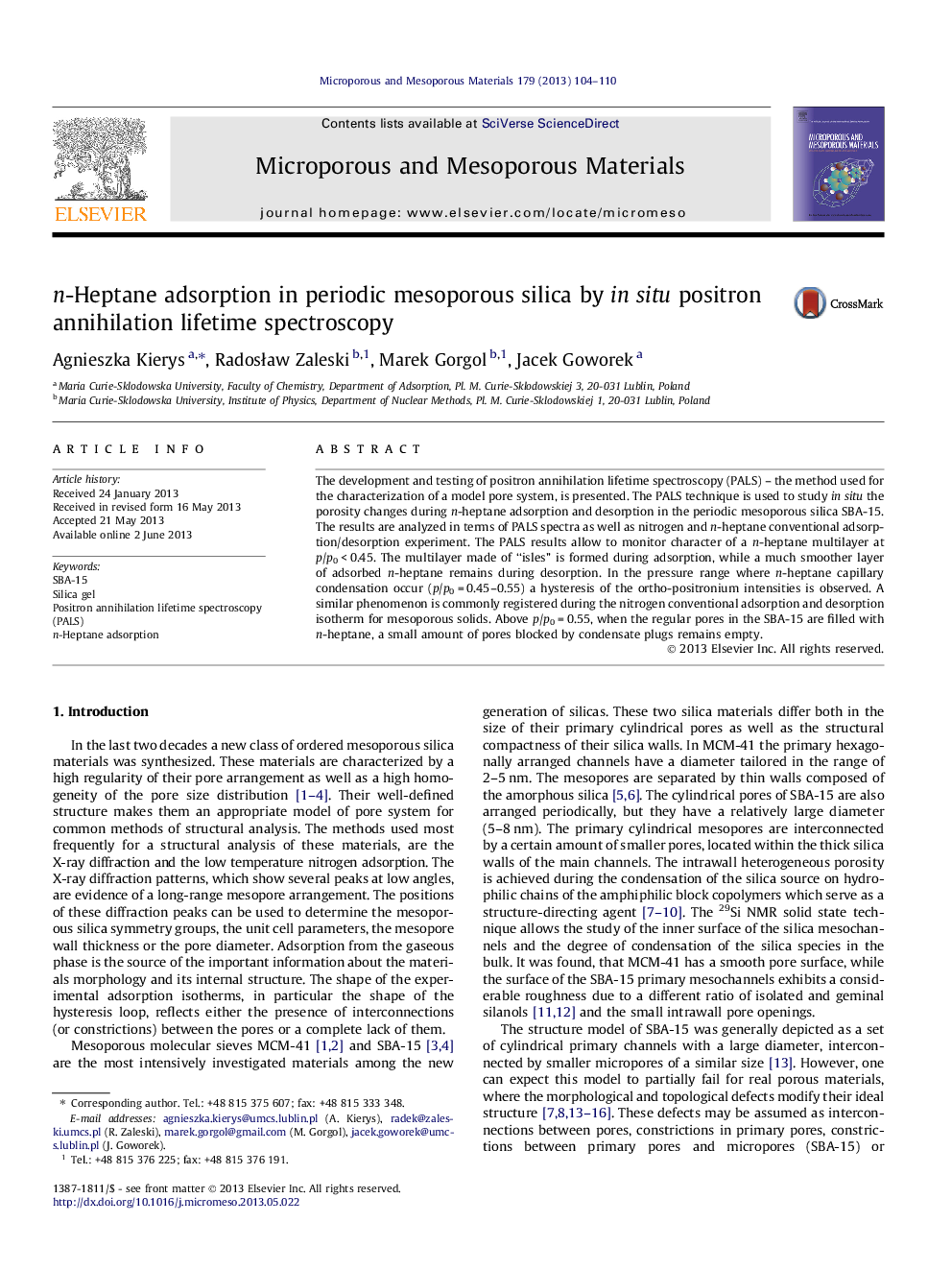| Article ID | Journal | Published Year | Pages | File Type |
|---|---|---|---|---|
| 73470 | Microporous and Mesoporous Materials | 2013 | 7 Pages |
•Positron annihilation lifetime spectroscopy is useful tool to follow the adsorption.•The pressure of n-heptane vapors over the sample influences o-Ps lifetime and intensity.•Evolution of free volumes in SBA-15 during n-heptane adsorption is observed.•Adsorption of n-heptane in low pressure range is of “isle” character.
The development and testing of positron annihilation lifetime spectroscopy (PALS) – the method used for the characterization of a model pore system, is presented. The PALS technique is used to study in situ the porosity changes during n-heptane adsorption and desorption in the periodic mesoporous silica SBA-15. The results are analyzed in terms of PALS spectra as well as nitrogen and n-heptane conventional adsorption/desorption experiment. The PALS results allow to monitor character of a n-heptane multilayer at p/p0 < 0.45. The multilayer made of “isles” is formed during adsorption, while a much smoother layer of adsorbed n-heptane remains during desorption. In the pressure range where n-heptane capillary condensation occur (p/p0 = 0.45–0.55) a hysteresis of the ortho-positronium intensities is observed. A similar phenomenon is commonly registered during the nitrogen conventional adsorption and desorption isotherm for mesoporous solids. Above p/p0 = 0.55, when the regular pores in the SBA-15 are filled with n-heptane, a small amount of pores blocked by condensate plugs remains empty.
Graphical abstractFigure optionsDownload full-size imageDownload as PowerPoint slide
